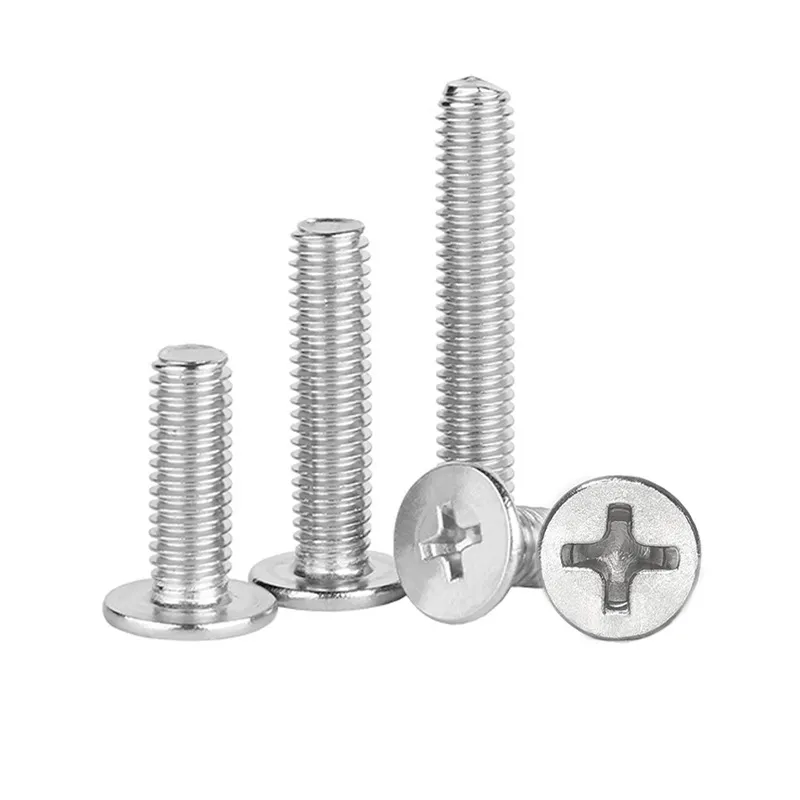

Self-tapping Screws Suitable for Use with I Beams in Construction Projects
Dec . 13, 2024 22:41 Back to list
Self-tapping Screws Suitable for Use with I Beams in Construction Projects
Self-Tapping Screws for I-Beams An Overview
When it comes to construction and engineering, the choice of fasteners plays a critical role in ensuring safety, stability, and efficiency. Among the different types of fasteners, self-tapping screws have gained significant popularity, particularly in the context of I-beams, which are commonly used in structural applications. This article explores the benefits, applications, and considerations associated with using self-tapping screws in conjunction with I-beams.
What Are Self-Tapping Screws?
Self-tapping screws are specialized fasteners designed to create their own holes in the materials they are driven into. Unlike traditional screws that require pre-drilled holes, self-tapping screws feature a sharp point and distinct threads that enable them to penetrate tough materials like metal, wood, and plastic efficiently. This design not only simplifies the installation process but also improves overall productivity by reducing the need for additional tools or equipment.
Advantages of Using Self-Tapping Screws with I-Beams
1. Ease of Installation One of the primary benefits of self-tapping screws is their ease of use. The ability to drive them directly into the I-beam without pre-drilling is particularly advantageous in construction scenarios where time is of the essence.
2. Strong Mechanical Joint Self-tapping screws provide a strong mechanical connection between I-beams and other structural components. Their design allows them to maintain a tight grip, ensuring that loads are transferred effectively across connections. This is critical in applications requiring high stability and durability.
3. Versatility Self-tapping screws are available in a variety of sizes, lengths, and materials, making them suitable for various applications involving I-beams. Whether the project involves connecting beams to vertical supports or attaching other structural elements, there is likely a self-tapping screw that fits the specific requirements.
4. Cost-Effectiveness Using self-tapping screws can be more economical than traditional fastening methods. The reduction in labor costs associated with eliminating pre-drilling can lead to significant savings on large-scale projects.
5. Corrosion Resistance Many self-tapping screws are treated or coated to resist corrosion, which is especially important in construction environments that may be exposed to moisture or harsh weather conditions. This ensures longevity and maintains the integrity of the structure over time.
Applications of Self-Tapping Screws in I-Beam Construction
self tapping screws for i beams

Self-tapping screws are particularly useful in various applications involving I-beams, including
- Structural Framing In both residential and commercial construction, self-tapping screws secure I-beams to other components, enhancing structural integrity. - Industrial Applications In manufacturing and other industrial environments, self-tapping screws are used to attach I-beams to machinery and equipment.
- Metal Fabrication In metal construction projects, self-tapping screws form crucial connections between steel beams and other metal elements, providing strong, reliable joints.
Considerations When Using Self-Tapping Screws
While self-tapping screws offer many advantages, there are some considerations to keep in mind
1. Material Compatibility It is essential to select self-tapping screws that are compatible with the specific type and thickness of the I-beam material. Using inappropriate screws can lead to weakened connections.
2. Screw Specifications Different projects may require different screw sizes, thread types, and coatings. Ensure that the screws used match the load requirements and environmental conditions of the project.
3. Installation Techniques Proper installation techniques must be followed to maximize the effectiveness of self-tapping screws. Misalignment or improper torque can compromise the joint integrity.
4. Load Considerations Engineers should account for load requirements in their calculations. While self-tapping screws are strong, they should be used in conjunction with other methods of support where necessary.
Conclusion
Self-tapping screws are an efficient and reliable choice for connecting I-beams in a variety of construction and engineering applications. Their ease of use, strong mechanical properties, and cost-effectiveness make them a preferred option in many scenarios. However, careful consideration must be given to material compatibility, specifications, and installation techniques to ensure that the structural integrity of the project is maintained. As construction techniques continue to evolve, self-tapping screws will likely play an increasingly prominent role in the successful assembly of I-beam structures.
Latest news
-
High-Strength Hot Dip Galvanized Bolts - Hebei Longze | Corrosion Resistance, Customization
NewsJul.30,2025
-
Hot Dip Galvanized Bolts-Hebei Longze|Corrosion Resistance&High Strength
NewsJul.30,2025
-
High-Strength Hot-Dip Galvanized Bolts-Hebei Longze|Corrosion Resistance&High Strength
NewsJul.30,2025
-
Hot Dip Galvanized Bolts-Hebei Longze|Corrosion Resistance&High Strength
NewsJul.30,2025
-
Hot Dip Galvanized Bolts - Hebei Longze | Corrosion Resistance, High Strength
NewsJul.30,2025
-
High-Strength Hot Dip Galvanized Bolts-Hebei Longze|Corrosion Resistance, Grade 8.8
NewsJul.30,2025

